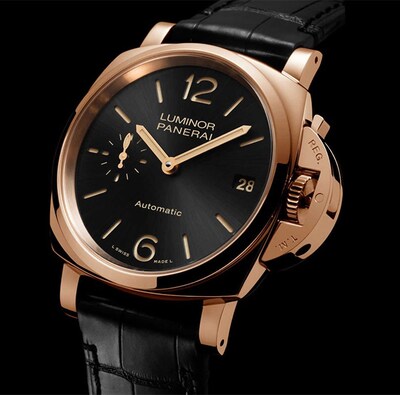Should Unisex Watches Be the New Norm?
By The Watches of Switzerland Group | 3 minute read

The watch industry has long been a traditionally male space, but now the tides are turning. As more luxury watch brands focus on creating timepieces aimed squarely at both men and women, Laura McCreddie-Doak and Ming Liu debate the merits of unisex design.
The Case For
We all know that when it comes to watches, women have been the ones to step over the gender lines because, let’s be honest, until recently men had it better. Men’s watches had better mechanics, and weren’t presented in a palette that would be considered saccharine by a seven-year-old. But last year, there was a shift. At SIHH and Baselworld, brands such as Panerai and Vacheron Constantin launched watches sized from 38-40mm and in colours that could be easily worn by either gender. They weren’t bandying around the term ‘unisex’ but they weren’t using the words ‘ladies’ or ‘gents’ either.
The trend continued this year: Gucci’s biggest new watch launch in ages, the Grip collection, was gender neutral; Junghans had a slew of Bauhaus beauties to suit any wrist; and the original non-conformists, NOMOS Glashütte, continued to create desirable designs for couples who most definitely have a shared supply of black rollnecks. Suddenly the Swiss are throwing off the constraints of gender and making well-designed timepieces for anyone. Because, let’s face it, when it comes to the everyday wearer, we all want the same thing. Great design, longevity, a wrist based signifier of just how cool a person we are – none of that needs to be gendered. Also, how do you divide along gender lines now? Some men aren’t averse to a diamond-set bezel; others are partial to a 5720P with a salmon pink dial. Women wear 41mm Tudor Black Bays, and even more wear huge Hublots. In my own household, we have a Longines Legend Diver and a Bremont Solo that are communal watches.
Given how fluid the notion of gender is everywhere else, still dividing watch collections that way feels as outmoded as thinking your tourbillon is still there to counteract the effects of gravity on an escapement.
Laura McCreddie-Doak is a watch writer and City A.M. Bespoke’s women’s watch columnist
The Case Against
Ten or 15 years ago, such an argument for androgyny may have had legs, but the watch industry – and indeed the wider world – has moved on. More women are in top posts, from management to mechanics (for instance, Jaeger-LeCoultre’s CEO Catherine Rénier, and Cartier’s head of movement creation, Carole Forestier-Kasapi), and their decisions and ideas have been trickling down into watches created by women, for women. After all, sales can’t be ignored: self purchasing females are increasingly a force to be reckoned with, and they’re demanding more from both design and calibres (ie more complications, less quartz). Besides, we should be rallying against homogeny: high streets from Hong Kong to Houston now all look the same, with identikit brands and fashions. Do women really want to wear the same watches as everyone else, let alone men?
A modern woman wants a watch for herself – one that speaks to her and only her, and which she personally identifies with. Having a blanket unisex watch brief is also no good for watch designers. Designing a watch that’s strictly limited to women’s taste is surely a welcome challenge for any creative mind. The idea of ‘shrink, pink and add diamonds’ to a bestselling men’s watch is outmoded and lazy – women see right through it. So watch designers (especially male ones) are being kept on their toes, confronted to create ever more innovative designs that push the boundaries of feminine watchmaking, and this can only benefit the whole industry. Take the founder of MB&F, Maximilian Büsser: when this decidedly masculine watch house launched its first women’s timepiece in March, he admitted to being ‘terrified’. Now that’s a great starting point for ground-breaking design, if you ask me.
Ming Liu writes for the Financial Times and The New York Times International Edition